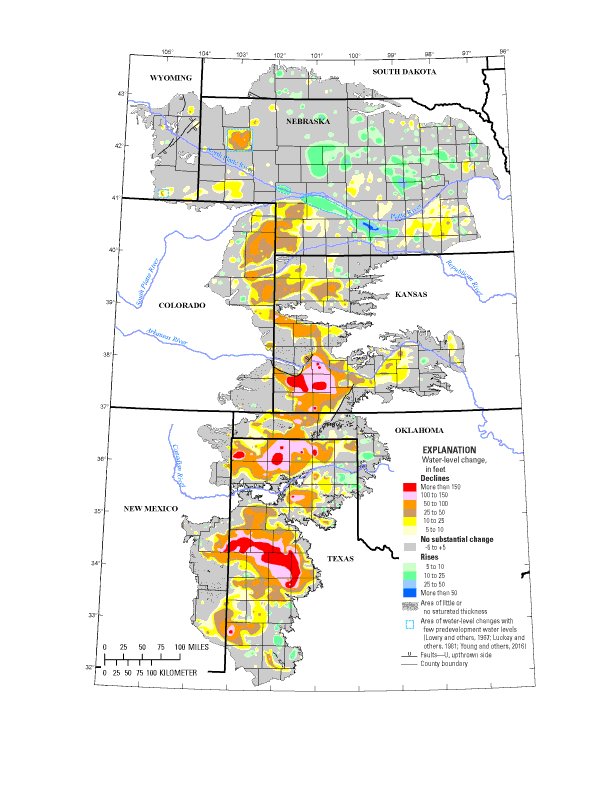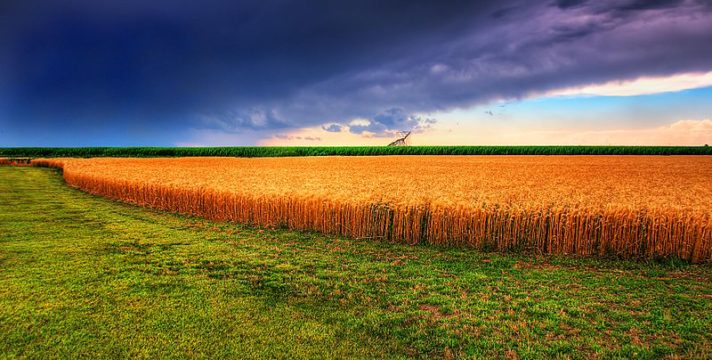University of Denver Water Law Review: Crisis on the High Plains: The Loss of America’s Largest Aquifer – the Ogallala
by Jeremy Frankel | May 17, 2018
The grain-growing region in the High Plains of America—known as America’s breadbasket—relies entirely on the Ogallala Aquifer. But long term unsustainable use of the aquifer is forcing states in the region to face the prospect of a regional economic disaster. As the High Plains states reach the verge of a major crisis, the states have taken different approaches to conservation with varying results.
The Ogallala Aquifer supports an astounding one-sixth of the world’s grain produce, and it has long been an essential component of American agriculture. The High Plains region—where the aquifer lies—relies on the aquifer for residential and industrial uses, but the aquifer’s water is used primarily for agricultural irrigation. The agricultural demands for Ogallala water in the region are immense, with the aquifer ultimately being responsible for thirty percent of all irrigation in the United States. The Ogallala Aquifer has long been unable to keep up with these agricultural demands, as the aquifer recharges far slower than water is withdrawn.
Aside from the obvious agricultural ramifications from the Ogallala’s depletion, recent studies have shown that groundwater depletion also has a severe effect on freshwater ecosystems in the region. Each state has had to confront the issue in their own way, but the depletion of the aquifer has become severe enough to warrant the attention of the federal government as well. At the state level, the focus has been on maintaining an orderly depletion of the aquifer rather than developing a plan for sustainable use. However, some states have achieved some level of success in slowing down the aquifer’s depletion. Kansas, for example, has recently achieved mild success by adopting a program that put conservation in the hands of the State’s farmers. On the other hand, Nebraska has seen more success than Kansas by being tougher on farmers and exercising its enforcement powers. The federal government has also set up financial and technical assistance for farmers who commit to conservation and is funding large-scale pipeline projects to bring in water to the more desperate areas of the High Plains.
Background

(Image: Map of the Ogallala Aquifer identifying areas of depletion. United States Geological Survey.)
The Ogallala Aquifer, also known as the High Plains Aquifer, underlies eight different states, stretching across America’s High Plains from South Dakota down to Northern Texas. It is an unconfined aquifer that is recharged almost exclusively by rainwater and snowmelt, but given the semiarid climate of the High Plains, recharge is minimal. In some areas, the water table is dropping as much as two feet a year, but recharge in the aquifer only averages around three inches annually.
The aquifer provides nearly all of the water for residential, industrial, and agricultural uses in the High Plains region. Irrigated agriculture is particularly straining on the aquifer as the region is responsible for one-fifth of the wheat, corn, cotton, and cattle produced in the United States. The High Plains actually leads the entire Western Hemisphere in irrigation with fourteen million acres irrigated annually, primarily in Nebraska, Kansas, and Texas. Accordingly, farming accounts for an astounding ninety-four percent of groundwater use in the region.
The resulting strain on the aquifer has been apparent for decades as recharge in the semiarid region has been unable to keep up with such a high demand. Because of the continuous decline in the aquifer, some areas that traditionally relied on the aquifer for irrigation are now unable to do so. “We are basically drying out the Great Plains,” according to Kurt Fausch, a professor at Colorado State University who studies the Ogallala. In Western Kansas, for example, water levels have declined by up to sixty percent in some areas as the gap between what is withdrawn for irrigation and what is recharged continues to expand. In northwest Texas, so much water has been pumped and so little recharged that irrigation has largely depleted the aquifer in the area.
Effects of Depletion
Without Ogallala water, significant portions of the High Plain’s agriculture and related businesses are entirely unsustainable, which could threaten the existence of entire towns whose economies are dependent on water drawn from the aquifer. There are global implications as well, as the region produces one-sixth of the world’s grain produce. A study from Kansas State University predicted that the aquifer would be seventy percent depleted by 2060 if irrigation practices do not change. However, the study further predicted that the aquifer could potentially last up to one hundred more years if all farmers in the region cut their use by twenty percent.
Aside from the devastating effects on agriculture, a study recently published by a team of stream ecologists concluded that depletions to the Ogallala Aquifer are also leading to fish extinctions in the region. Streams and rivers that depend on the aquifer are drying out after decades of over-pumping. The study found pumping to be associated with collapses of large-stream fish and the simultaneous expansion of small-stream fish. This creates a catalyst for biotic homogenization, which in turn leads to less resilient aquatic communities and loss of ecosystem functions. The study predicts an additional loss of 286 kilometers of stream by 2060, as well as the continued replacement of large-stream fish by fish suited for smaller streams.
…to continue reading, click here.
